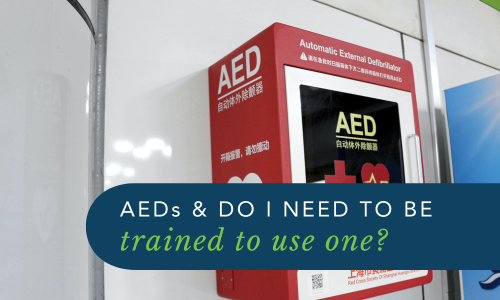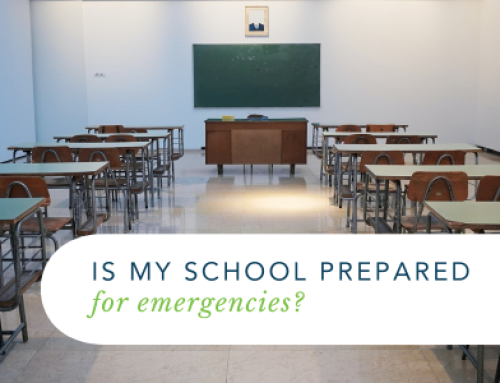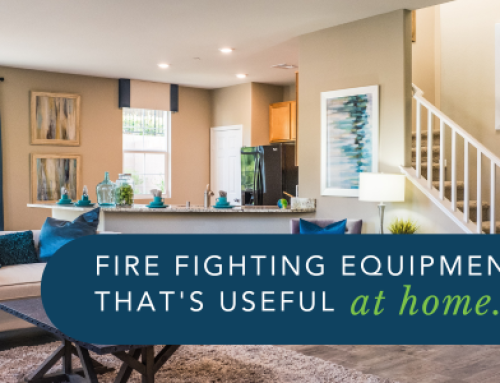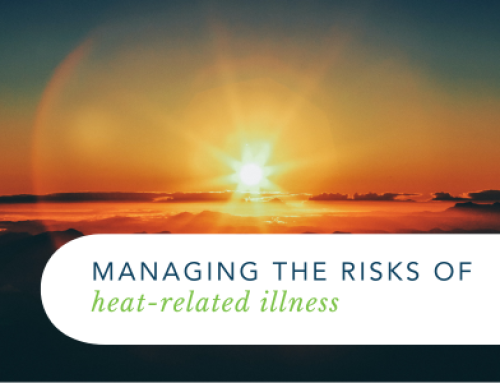An AED, or Automated External Defibrillator, or commonly known as a defib, is a device that can be used on a person whose heart has stopped and is in Cardiac Arrest. An AED will analyse the person’s heart rhythm and can provide a shock to the heart to try and bring it back into normal rhythm. The use of an AED is an essential step in the ‘Chain of Survival’ for when someone is experiencing a cardiac arrest.
Chain of Survival
The Chain of Survival outlines what is needed to provide the person in cardiac arrest the best chance of survival. It incorporates:
- Early Access – identifying the cardiac arrest and calling for medical help immediately. As soon as it is identified that a person could be having a heart attack or has gone into cardiac arrest, you need to call emergency services (000) to medical help straight away.
- Early CPR – Immediately after a person collapses and their heart has stopped, CPR needs to be commenced immediately. CPR (Cardiopulmonary Resuscitation) is a lifesaving procedure used on a person who is unresponsive and not breathing You need to be trained to administer CPR effectively or follow the instructions of a trained person or 000 call operator.
- Early Defibrillation – this step is the step that is most likely to improve the persons chance of survival. Public access to AED’s is the key to increasing the survival rates of persons in cardiac arrest outside of hospitals.
- Early Advanced Care – The final link is the early intervention of advanced cardiac life support by Paramedics and medical treatment in a hospital.
As far as Step three in the Chain of Survival is concerned there is the common question around ‘Do I need to be trained to use an AED’? People who do not know a lot about first aid and using an Automated External Defibrillator (AED) often believe that you do need to be fully trained to use the AED when someone is in Cardiac Arrest. This is not the case. AEDs can be used by almost anyone by following the instructions the device gives you.
There is a big push to have AED’s available in most public areas including Shopping Centre’s, clubs, public parks, sporting venues, etc. There should be clear signage to indicate the location of the AED.
Who Can Use an AED?
Anyone can use the AED. You do not have to have been previously trained to use it. If you have been trained, that is a bonus, but it is not essential to using the AED. Where there is an AED available to use when someone is in cardiac arrest it should be used.
Emergency services must be called immediately, and someone needs to commence CPR straight away. Then the AED should be used as soon as possible after that.
How to Use an AED
To use the AED, open the device and press the start/power button. There will be a set of pads attached to the AED and you will start to hear instructions being given from the device. You simply need to follow the instructions as they are given to you. You will need to expose the person’s bare chest and you may need to shave some hair to allow for best contact between the pads and the person’s skin. All AEDs should have some disposable shavers and a towel to help prepare the person for use of the AED. There is diagrammatic information on the pads to show you where to place them on the person’s bare chest and side.
Once the pads are in place, continue following the instructions given by the device. Also be guided by the emergency services call taker to assist you. The device will tell when to continue CPR and when to stop to allow it to analyse the heart rhythm and when to apply the shock to the heart. It is important that no one is touching the patient when the device is analysing the patient and when the shock is delivered.
Continue to follow the instructions given by the device and continue effective CPR guided by the 000 call taker until the arrival of the paramedics and they take over treatment of the person.
Because the use of the AED is such an important step in the Chain of Survival it is important they everyone understands that the AED can be used by anyone able to follow the instructions. AED’s can provide instructions in various languages so they can be programmed for use in locations where there are greater numbers of ethnic populations and use the most appropriate language for that area.
You might save a life.
You may not be First Aid trained and may have never been shown how to use an AED, but this doesn’t mean you cannot help a person who is in Cardia Arrest. By calling triple 000 and being guided by them in what to do and locating an AED and using it, you may just be able to save someone’s life.
For more information on emergency response training and first aid training, contact us at Workplace Emergency Management, and we will be happy to help you be emergency ready.
GET IN TOUCH
Are you ready for peace of mind that your workforce is as safe and prepared as possible?
With a dedicated team of staff ready to help you meet compliance requirements and improve the overall safety of your workplace, all you need to do is get in touch.
Request your free audit today!



